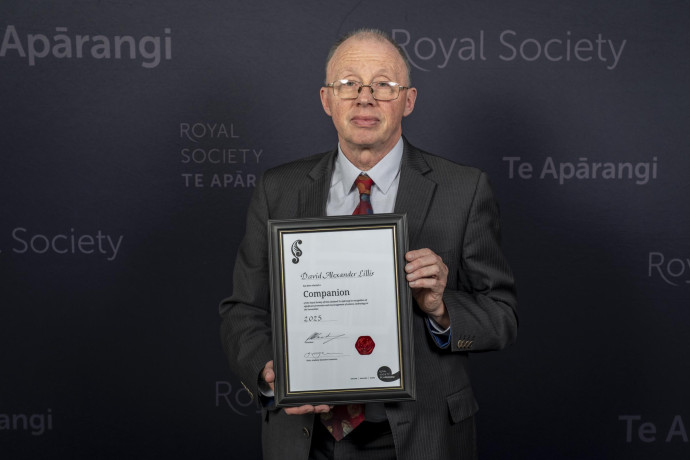News
Published 9 October 2025A Wellington champion for science and technology

Dr David Lillis CRSNZ has been elected as a Companion of the Royal Society Te Apārangi for his long service to the Wellington Branch of the Royal Society Te Apārangi.
David’s career has stemmed from his interests in physics, statistics, and mathematics. He has been a teacher, lecturer, research evaluator, and a statistician with various government bodies.
For 28 years, David has worked to share scientific information, and promote debate and discussion on a range of topics through regular Branch talks.
He has also written prolifically in various media about his views, including on science policy.
“Seeing people enjoying our lectures is very fulfilling” – David Lillis
David says of his role in research evaluation for the Foundation for Research, Science and Technology in 1994: “It was the detonator, in a sense, cementing my lifelong commitment to research, science, and technology.
“Anyone who is committed to those domains should bring an equivalent commitment to the pursuit of truth, and another commitment to the betterment of society and to humanity as a whole.”
“My perspective is that we need to work closely together to achieve improvements in health and wellbeing, in education and socioeconomically.
“We must ensure high quality in both science and education as we proceed.”
David says his career gave him insight into many areas of research, especially scientific research in New Zealand.
“During those years I formed immense respect for what we achieve in research here, especially on a limited national budget.
David has organised lectures for the Wellington Branch since 1996, and hopes to continue to encourage public interest in science and technology.
“Seeing people enjoying our lectures is very fulfilling.”
He notes that few others think they have the time or energy to do this kind of work.
“We need to show young people that there is value in giving back to society at large on a voluntary basis.”
